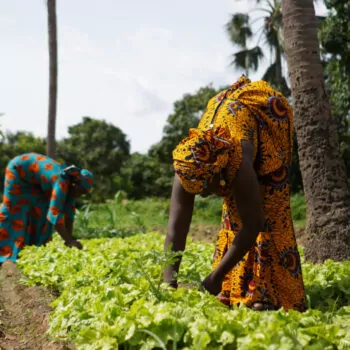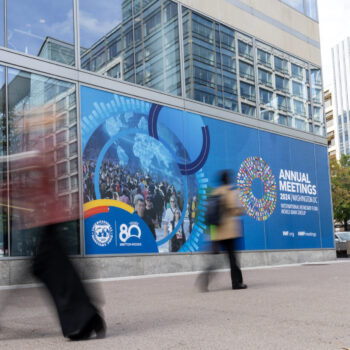The Asian Development Bank (ADB) has the potential to become Asia’s ‘climate bank’. The institution could and should become a driving force of climate-resilient, low-carbon sustainable development in the Asia-Pacific. The ADB has already achieved a considerable amount on all these fronts, but more is required to meet the climate challenge. This report examines how the ADB can align with the Paris Agreement on climate change, focusing on the South East Asian countries of Indonesia, Vietnam and the Philippines in particular.
Like all the major multilateral development banks (MDBs), the ADB has committed to aligning its operations with the Paris Agreement, including the goal of holding global temperature rise to well below 2°C and pursuing efforts to limit this to 1.5°C. Translating this global objective into new policies at the ADB, consistent with the joint MDB framework for alignment with the Paris Agreement, is the next step in this process.
This briefing makes a series of recommendations for how the ADB could align its operations and its energy policy with the Paris Agreement in the context of South East Asia. As growing demand for energy is at the core of the mitigation challenge in South East Asia, energy and related infrastructure is therefore a key focus of this report.
Top three recommendations for the Asian Development Bank
- The Asian Development Bank should use the forthcoming energy policy review to set a target date for 100% of its energy lending to be to zero carbon energy projects, phasing out lending to unabated fossil-related projects.
- The ADB needs to make energy efficiency an infrastructure priority and should consider setting a specific energy efficiency lending target.
- The Asian Development Bank should be more specific about how it is going to support countries in implementing and raising the ambition of Nationally Determined Contributions under the Paris Agreement.
The ADB’s ongoing energy policy review, due to be published in 2020, represents a key opportunity to embed transformational change within the Bank’s energy-related operations and lending. The ADB’s energy policy was last reviewed ten years ago in 2009; the new policy may be in place until 2030. It is critical that the next energy policy secures alignment with the Paris Agreement and triggers change at all levels of the ADB’s management and operations.
Another opportunity is that of new leadership. ADB President Takehiko Nakao’s term is due to end in November 2021. Under President Nakao’s tenure, the Bank has grown and been reformed to have a greater focus on inclusive and sustainable development. It is essential that his successor continues this and ensures that the ADB achieves full alignment with the Paris Agreement and assumes the role of a ‘climate bank’ for Asia. As institutions responsible for the use of public capital, MDBs have a responsibility to constantly re-assess their activities to ensure they are using this money in the public’s interests.
This paper recommends that the ADB set new and ambitious targets for 100% zero carbon energy lending and energy efficiency. The Bank should increase its climate finance target and revise its definition of clean energy to exclude natural gas in light of climate change concerns. The ADB country-level strategies should be used as a key area for ensuring Paris alignment, and the bank should also prioritise the use of guarantees over loans in order to maximise mobilisation of private capital.
The paper is focused on South East Asia, and in particular the countries of Indonesia, Vietnam and the Philippines, because these countries face exceptional risks of carbon lock-in that endanger the goals of the Paris Agreement, as well as significant untapped zero carbon energy and emissions reduction potential. It is critical to the global climate challenge that the Asian Development Bank fulfil the role of a ‘climate bank’ for South East Asia.
To date, ADB activities have already supported many low-carbon projects across South East Asia, including in Indonesia, Vietnam and the Philippines. The ADB has issued and promoted green bonds, financed renewable developments, developed risk mitigation products and supported energy efficiency demonstration projects. While the ADB alone cannot ensure Paris alignment across South East Asia, it can help to ensure countries are on pathways to deep decarbonisation and help re-orient the private and public sectors toward such a trajectory. It can also ensure that its own operations ‘do no harm’ to the Paris Agreement’s global temperature goal.
There is considerable scope for learning from other multilateral and bilateral development institutions and replicating successes from other parts of the world in an Asian context. The multilateral development banks are already working together to build a joint approach to alignment with the Paris Agreement, and sharing best practice is part of this process. This report looks in detail at two such examples of best practice—one on energy efficiency and one on microfinance—and lists more than two dozen other initiatives that might serve as sources of inspiration.
This paper is intended as a contribution to the ADB’s ongoing work on alignment with the Paris Agreement, the bank’s forthcoming energy policy review and the ADB’s evolving country-level work in Indonesia, Vietnam and the Philippines. Many of the recommendations are also relevant to other MDBs. We look forward to continuing to work with the Bank and its stakeholders to achieve the vision of the ADB becoming Asia’s ‘climate bank’.
Read the full report, The Asian Development Bank: Asia's future climate bank, here.


